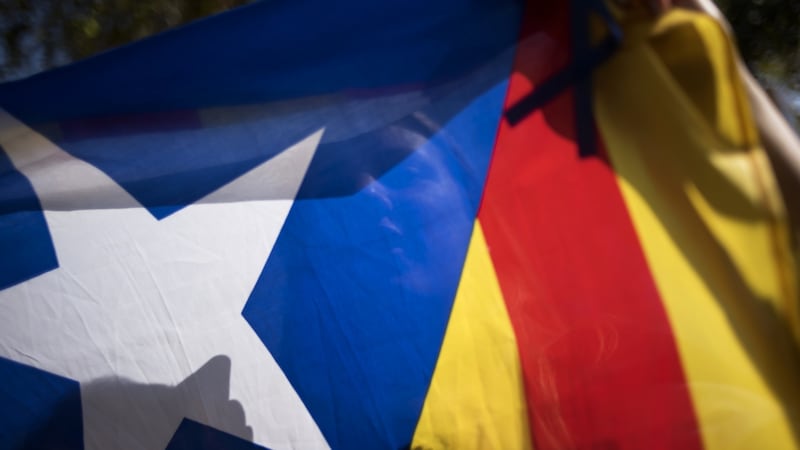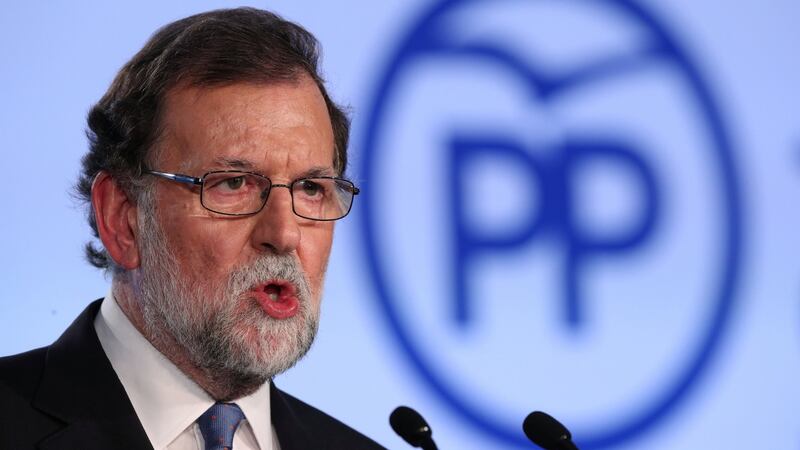The referendum on independence planned by the nationalist Catalan government for this Sunday is the culmination of decades, some would say centuries, of tensions between the northeastern region and Madrid.
Since the transition from dictatorship to democracy in the 1970s, Catalonia has had a degree of autonomy from the Spanish state, with its own parliament, education and health systems and police force. For much of that time, the Catalan regional government has had a complicit relationship with Madrid, sometimes supporting the central government in the national parliament in exchange for concessions.
However, a minority of the Catalan population has consistently wanted independence from Spain, due to an emotional attachment to Catalonia as a separate nation, as well as perceived injustices perpetrated by the Spanish state going back to the War of the Spanish Succession in the early 18th century. But over the last decade or so, an economic crisis and the rigid policies of the conservative Popular Party (PP) have fuelled discontent in the region, creating a formidable drive for independence.


2006
The current wave of secessionist feeling has its roots in a new regional autonomy statute drawn up for Catalonia under the socialist government of José Luis Rodríguez Zapatero.
The original proposed document cedes substantial new powers to Catalonia, governed by a socialist-led coalition, although it is subsequently watered down during negotiations. The final statute is then approved by the Catalan people via referendum, by the Catalan parliament, and, finally, by the Spanish parliament.
However, the conservative PP of Mariano Rajoy, then in opposition, takes issue with the new statute and appeals against around half of its 222 articles.
June 2010
After a four-year delay, the constitutional court rules that it has accepted the PP’s appeal against several of the articles in question. The decision, announced just days before the Catalan-inspired Spanish soccer team wins its first ever World Cup, draws a furious response.
“The sovereignty of the Catalan people does not lie in the regional parliament or in the Spanish parliament, but in any interpretation the [constitutional] court wishes to make,” notes the secessionist historian Ferran Mascarell. “Winning elections, making laws and consolidating majorities – none of that seems to matter any more.”
A massive demonstration in the streets of Barcelona follows, as does the creation of the Catalan National Assembly (ANC), a civic organisation advocating independence.
September 2012
Catalan premier Artur Mas meets with Mariano Rajoy, now prime minister, in Madrid. With recession biting, Catalans complain that they pay much more to Madrid in tax revenues than they receive back in investment and Mas requests a new financial arrangement for the region. Rajoy refuses to broach the matter, citing Spain's deep economic crisis, and Mas declares that his conservative nationalist administration now supports the independence cause.
November 2014
Mas’s government organises a non-binding referendum, or “consultative process” on independence from Spain. The central government declares the vote illegal and says it will prevent it from going ahead. Yet, despite court orders, the referendum does take place across the region.
The result is overwhelmingly in favour of independence – just over 80 per cent vote to separate – but a relatively low turnout, particularly by those Catalans who want to remain part of Spain, means it is not a representative ballot. In reality, Catalans are more or less split down the middle on the issue, although around four-fifths would like a negotiated, Scotland-style vote.

2015
Mas calls a regional election for September, which is treated as a plebiscite on independence. Pro-independence parties narrowly win a majority in the 135-seat Catalan parliament, but gain only 48 per cent of the popular vote. Nonetheless, they declare the result gives them a mandate to pursue a “roadmap” to independence.
A new Catalan government is formed, with a broad coalition of conservatives and social democrats, with support from the Popular Unity Candidacy (CUP), a small anti-capitalist party. Two months later, the Catalan parliament approves a declaration of intent "to begin the creation of the Catalan independent state in the form of a republic". The CUP forces Mas out as Catalan leader and Carles Puigdemont, a life-long separatist, replaces him.

2017
In March, Artur Mas is barred from public office for two years for organising the 2014 non-binding referendum. “We would do everything the same way again,” he says after the judgment. Rajoy dismisses a “final” offer from the Catalan government to negotiate a formal referendum, describing the plan to vote as “a serious threat to coexistence and constitutional order”. In June, Puigdemont announces that a binding referendum will be held on October 1st.
On September 6th and 7th, pro-independence parties outrage the opposition by changing the order of the day in the regional parliament and pushing through a referendum law and another bill preparing the legal framework for independence. “Your process of radicalisation embarrasses anyone with a minimum of respect for democracy,” Xavier García Albiol, of the PP, tells the secessionists.
“Does anyone seriously think we’re not going to vote?” Puigdemont says. “Of course we’re going to vote!”
On September 20th, tensions escalate as the civil guard raids Catalan government premises and arrests 14 people allegedly involved in preparations for the referendum. Millions of voting slips are seized and thousands of Catalans take to the streets to demonstrate for the right to vote on Sunday.














